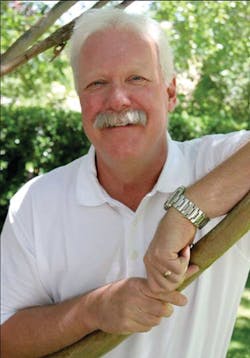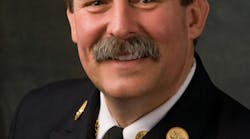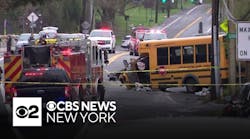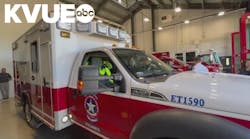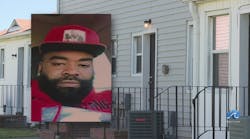Sudden cardiac arrest is one of the leading causes of death in the United States. The survival rate for witnessed, out-of-hospital, sudden cardiac arrest is approximately 5 percent in most communities. But in communities with public access defibrillation (PAD) programs, the survival rate can rise to well above 50 percent.
In August 2007, Joe Farrell was golfing at a resort in North Lake Tahoe, NV, when another golfer collapsed on the course from sudden cardiac arrest. Farrell, a physical therapist from Danville, CA, was part of the group that called 911 and started CPR. In just a few minutes, an EMS team from the North Lake Tahoe Fire Protection District arrived with an Automated External Defibrillator (AED) and revived the victim. A helicopter airlifted the man to a nearby hospital.
“What I learned that day was that every second counts,” Farrell said. “When we came across this gentleman, he was blue from lack of oxygen. We did CPR, and then the ambulance arrived with an AED. And the man lived.”
Farrell had witnessed a textbook save carried out in a community that is exceptionally well prepared to handle sudden cardiac arrest – a community that has a PAD program.
Battalion Chief Michael Schwartz, one of the paramedics who responded to the golf course that day, is one of the people responsible for setting up the North Lake Tahoe PAD program.
“The need for a PAD program in our community was obvious,” Schwartz recalls. With remote ski resorts, campgrounds and beaches, the North Lake Tahoe region has many areas that can’t be reached quickly by fire department vehicles or ambulances. The population, normally 10,000, swells to as many as 100,000 people in the summer and on winter weekends, putting extreme demands on emergency services. To reach sudden cardiac arrest victims quickly enough to save their lives, the fire department needed to train the community in CPR and equip potential first responders with AEDs.
The PAD program began by placing AEDs in the community with lifeguards and members of the ski patrol. Then Schwartz developed a business plan for CPR and AED training programs for resort employees, teachers and other members of the community.
Today, the North Lake Tahoe PAD program encompasses more than 125 registered AEDs, most of them Cardiac Science Powerheart G3 models. The sudden cardiac arrest survival rate in the area has climbed to 50 percent.
Farrell was impressed when he saw the North Lake Tahoe PAD program in action. Little did he know that just a year later, he'd be involved in another sudden cardiac arrest incident – this time, as a victim.
Farrell collapsed at a friend’s house in the Northern California community where he lives. Fortunately, the friend was trained in CPR and knew what to do. He began compressions and soon an ambulance arrived with an AED. Farrell says he was told that that he required multiple shocks, and that an AED had to be used again at the hospital. Farrell now has an implanted cardiac defibrillator.
As soon as he recovered, Farrell and his wife, Edie, became American Heart Association CPR/AED instructors. They’ve worked with the San Ramon Valley PAD Community Partnership Committee to get AEDs into all of the district's schools and persuade area hospitals to adopt hypothermia protocols for treating sudden cardiac arrest. Currently, the committee is involved in spreading the word about an award-winning Smartphone application used by the San Ramon Fire Protection District to alert people who are CPR trained when a sudden cardiac arrest incident occurs in their vicinity.
While North Lake Tahoe and the San Ramon Valley are very different communities, their successful PAD programs share these key factors:
1. Strong support for PAD from public safety leadership.
“That's essential,” Schwartz said. “You have to start with that advantage, or you have to gain it, before you can take an AED program out into the community.’
2. Involvement of community leaders and key partners.
From the very beginning, the North Lake Tahoe PAD program was closely involved with national and regional AED experts, including the American Heart Association and Nevada Project Heartbeat. At a local level, the program's first key partners were the agency in charge of the beaches, ski areas and recreation facilities, and the sheriff's office.
Both the North Lake Tahoe and San Ramon Valley PAD programs have gained the backing of local schools, churches and local philanthropic and community service groups.
“As we talked with schools, churches, the mayor’s office and leaders of town businesses, they were all interested in AEDs,” Schwartz said. “They'd all run risks, and they wanted to minimize those risks for the benefit of the whole community.”
3. Continuously available training.
Schwartz says that making CPR and AED training available on a regular basis (every Tuesday evening, with an all-day course one Saturday of every month) was essential.
“People know they can count on us to be there with the training if they need to renew their credentials,” he said.
Offering the training, and publicizing it through community news organizations, keeps the North Lake Tahoe PAD program in the public eye.
4. Support and coordination for AED owners.
The PAD programs make it easy for organizations and businesses to get and maintain their AEDs. They help with selection and purchasing and arrange on-site training for staff.
In North Lake Tahoe, organizations can purchase replacement batteries and AED pads through the program. The fire department assists local groups in obtaining grants from Nevada Project Heartbeat for AEDs and AED maintenance and has developed a relationship with a preferred vendor, Cardiac Science, which provides Powerheart G3 AEDs.
5. Strong funding and fundraising.
The North Lake Tahoe PAD program addressed the issue of ongoing funding by becoming essentially self-sustaining. Following the model of private safety-training firms, the fire department charges for CPR/AED training and for issuing certification cards to individuals who complete the training. It provides these services not only to the immediate community, but also to dozens of communities in Nevada and California.
“We issue 2,500 cards every month, at $5 a card,” Schwartz said. “It’s a way to do this and not cost the taxpayer.”
In the San Ramon Valley, the PAD Committee plays a major role in raising funds for the purchase of AEDs. Farrell talks to service organizations and other audiences about the importance of PAD programs and a community chain of survival that begins with CPR and ends with hospital-based care for sudden cardiac arrest survivors.
It’s a story he's uniquely equipped to tell.
“I talk about what happens when you have an AED, and can just take it off the wall and use it,” he says. “You can save someone’s life – that’s a pretty good investment.”
More more on this topic, view the webcast: "AEDs: Increasing Sudden Cardiac Arrest Survival Rates in Your Community"
